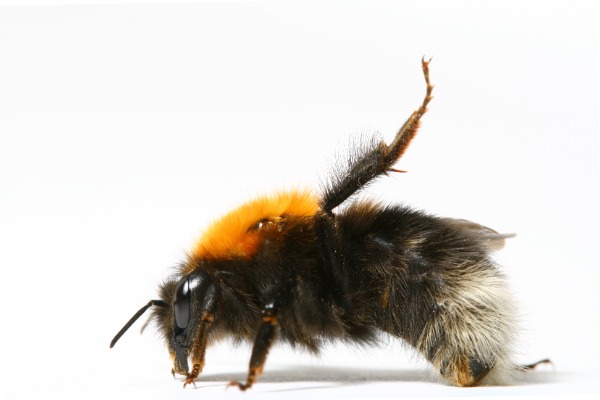Bee Sting Facts: 12 Facts About Bee Stings - Some May Surprise You!
Updated: February 2025
There are many assumptions about bee stings, quite a few of which are wrong. Here are 12 things about bee stings - some of which may surprise you!
12 Facts About Bee Stings
1. Not all bees can sting
For a start, male bees cannot sting at all. There is also a large group of bees known as stingless bees also known as Meliponini.
Stingless bees have evolved different ways to defend themselves, for example, by using tree resin as a type of 'glue' or sticky weapon against enemies such as ants.
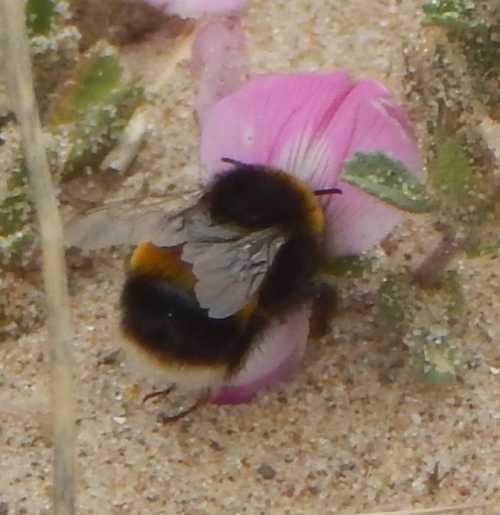 Bumble bee on restharrow.
Bumble bee on restharrow.2. There is more chance of being struck by lightning than death by bee sting!
Consider this:
- In the USA, you are more likely to die of the flu than bee stings.
- Even lightning kills more people every year than bee stings!
Here are the actual statistics:
- More than 20,000 people in the USA die from flu every year (U.S. Centers for Disease Control);
- On average, 90 people are killed every year in the U.S. by lightning. [NOAA Technical Memorandum NWS SR-193].
- As for death by traffic accident? I'll leave you to guess or find out what those figures look like!
Meanwhile, in the year 2000, the World Health Organisation reported that in the USA there were only 54 deaths attributable to bee stings – (from a population of 281 million people - Census data).
3. The most painful place to be stung for a human, is the nostril!
Believe it or not, a scientist took the time to find out which part of the body is most sensitive to the pain of a sting, by subjecting himself to stings on his own body.
See: Where Do Bee Stings Hurt Most
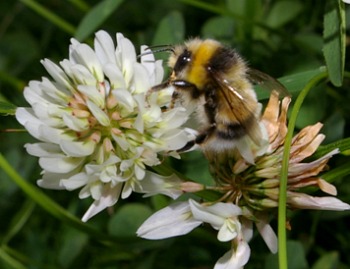 Male bees, like this beautiful male white-tailed bumble bee (Bombus lucorum is not capable of stinging you.
Male bees, like this beautiful male white-tailed bumble bee (Bombus lucorum is not capable of stinging you.4. Some bee stings are more painful than others
The stings of some bee species are more painful than others, but other insect stings hurt far more, and for longer.
A Nobel Prize winning entomologist, Justin O. Schmidt developed ta comparison of insect sting pain: the 'Schmidt Sting Pain Index'.
According to the index, most small bees are categorized into pain level 1 or less (least painful), and lasts 5 minutes or less. The sting of the western honey bee was categorized at pain level 2 (low) and lasted 5 to 10 minutes.
For comparison, the sting from a tarantula hawk (wasp) delivers a "blindingly fierce" and "shockingly electric" sting at pain level 4, according to Schmidt! whilst the painful sting of a warrior wasp lasted up to 2 hours.
So perhaps bee stings are not too bad after all!
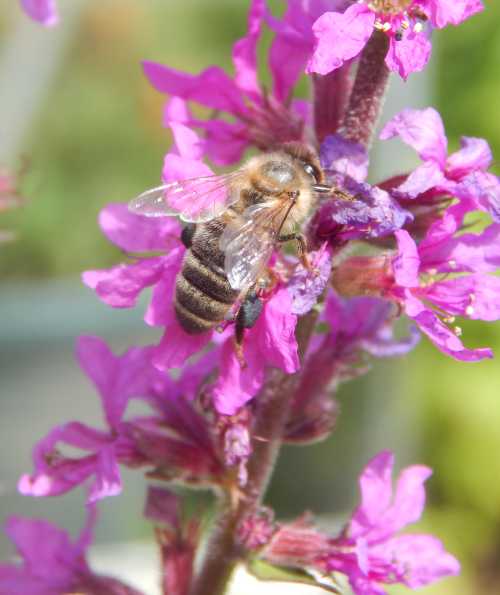 The sting of the beautiful honey bee only has a pain index of 2.
The sting of the beautiful honey bee only has a pain index of 2.5. Not all bees die if they sting you
It is correct that honey bee worker (females) will die if they sting you, because
they have barbed stings which get lodged in the
skin of mammals (including humans).
This is fatal to the honey bee when it tries to pull away from the victim, and the bee will die after the stinging incident.
However, honey bees can sting insect predators repeatedly. Male honey bees (drones) do not sting.
Queen honey bees are able to sting repeatedly, but queens rarely venture out of hives, and would be more likely to use their stings against rival queens.
However, bumble bees have a smooth stinger, and are able to sting repeatedly, but bumble bees are rarely aggressive. Read more about this subject: 'Do All Bees Die If They Sting You?'
6. The average adult can withstand more than 1000 bee stings
Unless a person has a life-threatening bee sting allergy (not very common) the average person can safely tolerate 10 stings per pound of body weight.
In fact, the average adult can withstand more than 1000 stings, although 500 stings could kill a child1. See: bee sting reactions.
Given that most bee species are solitary and not aggressive, and that bumble bees live in small colonies, a person is unlikely to receive so many stings in one go.
Realistically, the only way a person could be stung so many times in one go, would be due to the aggravation of a colony or swarm of honey bees. Such scenarios can usually be avoided.
An extreme reaction to bee stings can include anaphylaxis, which is a state of shock, but this is rare.
7. The venom from bee stings is different to that of wasp and hornet stings
There is a misconception that bee stings are the same as wasp and hornet stings.
In fact, the venom contains different toxins, and is variable according to species.
Further more, bee stings are a little acidic, where as wasp stings are neutral (not alkaline as some reports may suggest).
Thus, a person who has an allergy to wasp stings may not suffer from a bee sting allergy!
8. The bee's stinger is also used for egg laying
The sting is actually a modified ovipositor for laying eggs. Worker honey bees may lay eggs if a hive or nest becomes queenless.
Bumble bee workers may lay eggs when the queen begins to lay (unfertilized) eggs destined to develop into males. This usually results in conflict within the colony between the workers and the queen bumble bee.
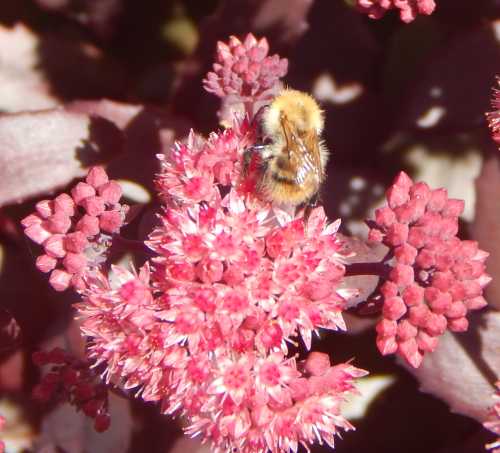 Worker bumble bee, foraging on ice plant and going about its business.
Worker bumble bee, foraging on ice plant and going about its business.9. Bee venom is sometimes used in health and beauty products
Some propose that bee sting venom can reduce arthritis symptoms. I have not seen any evidence to support or refute this claim (if you are
aware of any, please let me know!).
10. Elephants are afraid of being stung by bees
Although an elephant has a thick hide that a bee sting could not penetrate, nevertheless, elephants have sensitive areas of their bodies, such as inside their trunks.
Elephants are thus afraid of bees, and this finding is being used by conservationists to actually help protect elephants.
11. A sting is a defensive reaction to a perceived threat.
Most of the time, bees don't bother us. Think of the last time you walked through a garden or public park full of flowers. The bees go about their business, and are largely unnoticed.
Bees are generally non-aggressive and will only sting if they are provoked or feel threatened. If (for example) you accidentally step on a bee, it may feel threatened and sting!
If you are concerned generally, there are actions you can take to prevent bee stings.
12. No, bees don't really sting watermelons

It's a lovely old wives' tale that marks on watermelon flesh indicate bee sting, which in turn is a sign of watermelon sweetness.
Well, I'm afraid it's not quite true!
Bees do, however, pollinate watermelons, which may improve sweetness.
References / Resources
1. The Merck Manual of Diagnosis & Therapy, Seventeenth Edition, 1999.
- See other pages on this site.
Note: The author, Justin O. Schmidt was awarded the Ig Nobel Prize for physiology and entomology in 2015 for his book "Sting Of The Wild" available from good book sellers.
Do all bees sting?
If you found this page helpful or interesting, I'd really be grateful if you would share it with others - if not this page, perhaps another, such as Gardening For Bees.
Thank you so much :) .

